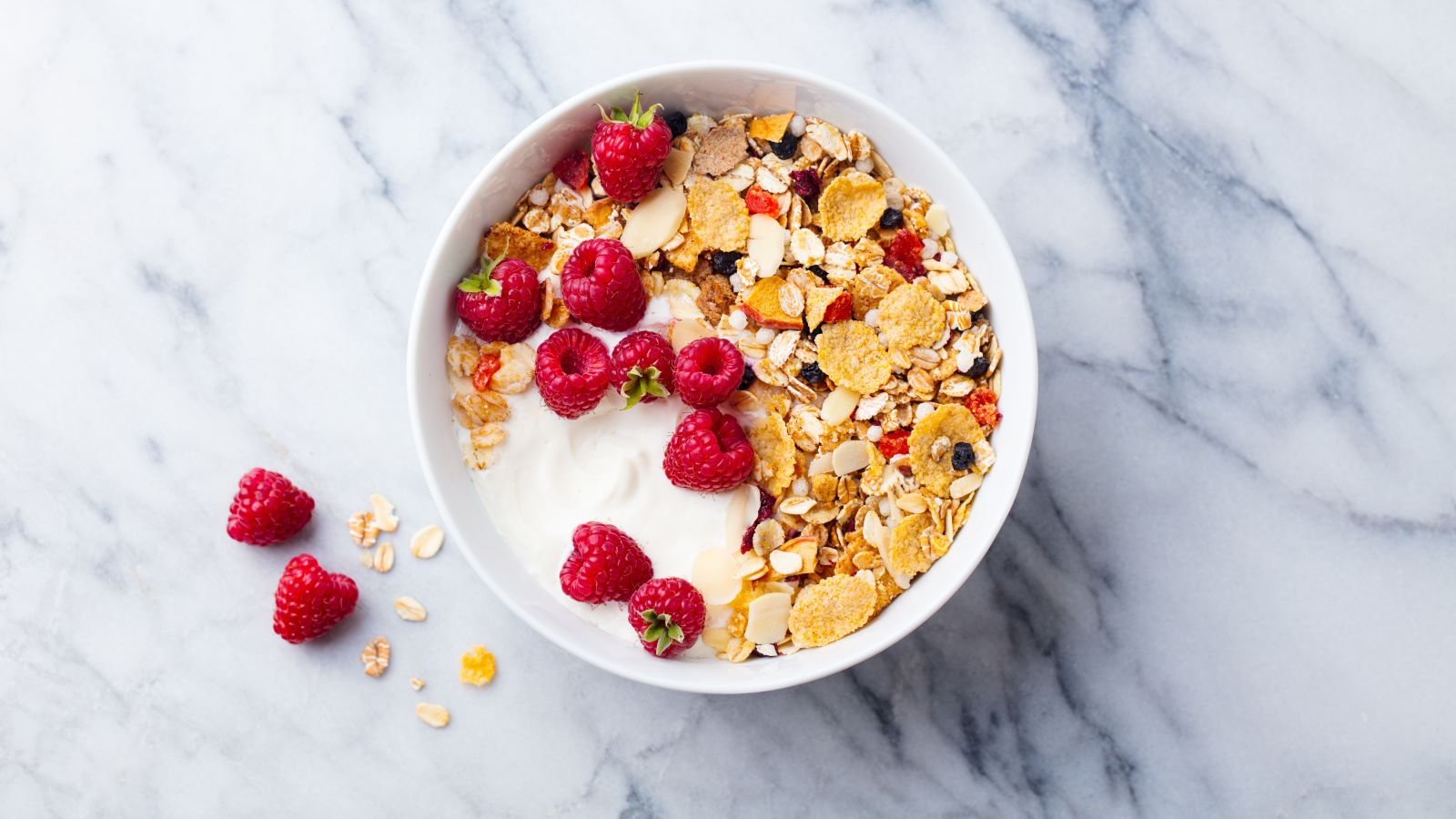<< Back
4 Tips for Choosing a Healthy Cereal

May 02, 2024
It’s a question as old as time – is cereal actually good for you? And which is the healthiest choice?
We asked a dietitian everything you need to know about choosing a healthy cereal.
1. Look for whole grains.
You’ve heard it before, and it’s no different with cereal – whole grain tends to be the best option.
“In general, there are a number of benefits to eating whole grain foods,” says Jamie Allers, MS, a registered dietitian with Hartford HealthCare’s Digestive Health Institute. “Whole grains are typically higher in nutrients than refined grains, and can help keep your blood sugar stable.”
Even some of the cereals marketed as “healthy” contain refined grains.
“That’s why it’s important to read the label,” Allers adds. “Look for ‘whole’ in the ingredient list when describing the grain.”
But whole grain isn’t the only option.
“You can also look for cereals or some granolas that are labeled as ‘grain free.’ These are made with nuts or seeds instead, and will offer more protein and fiber,” Allers says.

2. Watch out for added sugar.
When it comes to cereal, one culprit tends to stick out above the rest.
“Added sugars can be an issue with cereal,” says Allers. “Check the ingredient list – if sugar is near the top, there’s a greater percentage of it in the cereal. For example, if sugar is the second ingredient on the list, it is the second highest amount, by weight, in that cereal.”
Some cereals have multiple sources of added sugar, too.
“For example, one cereal might contain cane sugar, brown sugar and honey,” she notes.
> Related: Why Oatmeal Should Be Your Breakfast Staple
3. Serving sizes are key.
Before you fill your favorite bowl with cereal, it might be worth checking the portion size on the box.
“It depends on your goals, but if you’re monitoring portions, you might be surprised by what you learn,” says Allers.
A typical serving size for cereal is just one cup, while the average bowl holds closer to two cups.
4. Choose the right toppings.
Instead of relying on sugar to sweeten your cereal, experiment with different toppings.
“There are tons of great ways to add some extra flavor to your breakfast,” says Allers. “Sliced or slivered nuts and seeds can add fiber, protein and healthy fats, which will all help you feel full longer. Adding fruit like blueberries or strawberries can help with fiber and antioxidants – not to mention flavor.”
And the milk you choose plays a part, too.
“Some nut milks have less protein compared to traditional cow’s milk. But soy milk has protein, and there are some nut milks available that have added protein,” Allers notes.
> Want more health news? Text StartHere to 85209 to sign up for text alerts
How do other breakfast choices stack up?
Do you prefer oatmeal over cold cereal?
“Just like cereal, some oatmeal can be low in protein and high in added sugar, so it really depends what you choose. Making oatmeal at home is a great choice, because you can choose your own flavors and control the added sugar,” says Allers.
As far as other breakfast options, make sure to consider your nutrition goals.
“If you’re trying to increase protein, you can use yogurt or cottage cheese as a base, and top with cereal for a crunch. Eggs are another easy option, especially if you hard boil them ahead of time. You’ll get plenty of protein without the added sugar,” Allers says.
And if fiber is your priority?
“Try avocado toast using a whole grain bread, topped with chia seeds, hemp hearts or an egg,” she suggests.